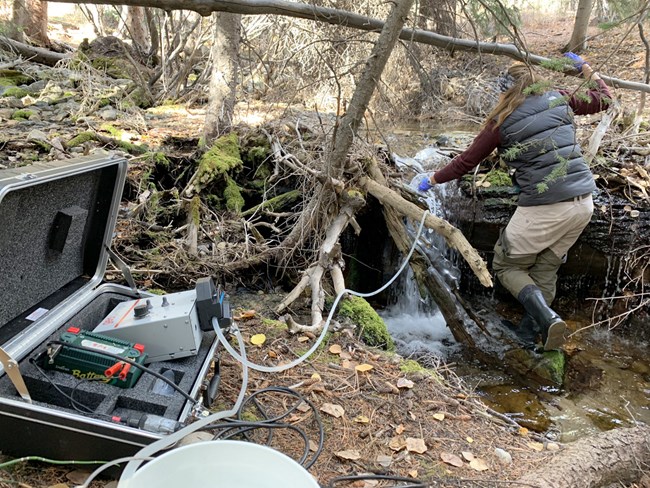Part of a series of articles titled The Midden - Great Basin National Park: Vol. 18, No. 2, Winter 2018.
Article
Treatment of Snake Creek to Restore Bonneville Cutthroat
This article was originally published in The Midden – Great Basin National Park: Vol. 18, No. 2, Winter 2018.

In August of 2016, Great Basin National Park collaborated with the Nevada Department of Wildlife (NDOW) and staff from other National Park Service (NPS) units to conduct a rotenone treatment in Snake Creek. The goal of the treatment was to eradicate all nonnative fish from the section of Snake Creek located within the park boundary. Removing these nonnative fish is a necessary step in restoring Bonneville cutthroat trout (Oncorhynchus clarkii utah, BCT) to Snake Creek, which is the largest South Snake Range stream identified as a BCT conservation population by the 2006 Conservation Agreement and Conservation Strategy for Bonneville Cutthroat Trout in the State of Nevada.
After a year and a half of intensive electrofishing surveys and environmental DNA (eDNA) analysis, it was revealed that less than 1% of brook trout had survived the 2016 treatment. A total of eight brook trout were captured and killed during electrofishing validation surveys conducted throughout the 2016 and 2017 field seasons. Additionally, eDNA sampling conducted in 2017 produced a positive brook trout result at 1 of the 75 sites sampled. This single site was not associated with any of the locations where brook trout were previously captured during the electrofishing validation surveys. Based on these results, it was determined that a second treatment needed to be conducted in 2018, postponing the reintroduction of BCT into Snake Creek.
In July of 2018, Great Basin National Park once again used both NDOW and NPS staff to conduct a second rotenone treatment in Snake Creek. With brook trout and eDNA results all located above the pipeline inlet, the section of Snake Creek between the pipeline outlet and the park boundary did not have to be retreated. This allowed the park to use less rotenone and fewer people.
Now that the treatment is completed, electrofishing validation surveys have once again commenced and will continue until the stream begins to freeze over. To date, no fish have been encountered in Snake Creek post-treatment. A second round of eDNA sampling was done in October 2018, and the results will be finalized by spring. Pending the outcome of our validation surveys, BCT are expected to be released into Snake Creek during the summer of 2019.
Last updated: February 20, 2024
